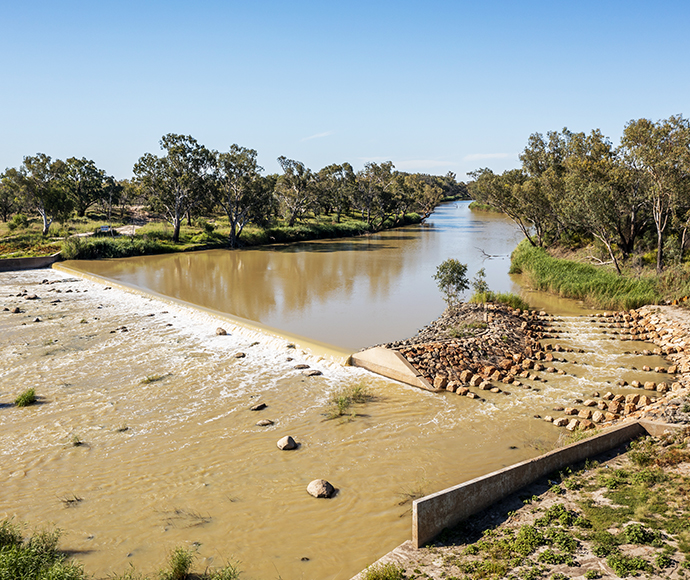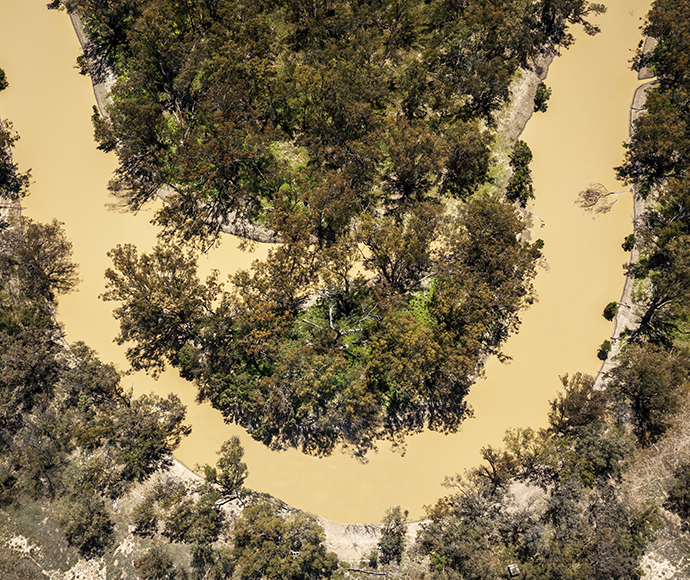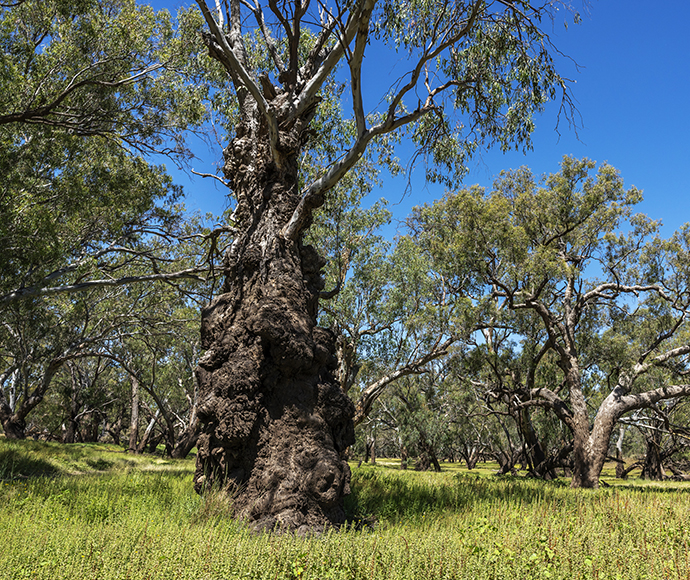The Barwon-Darling corridor links the rivers, lakes, and wetlands of the northern Murray-Darling Basin, and connects to the southern Basin through the Lower Darling River.
From its northern-most reaches to its connection with the Murray River, the Barwon–Darling River traverses diverse landscapes from the sub-tropical Darling Downs, through the semi-arid and arid interior to the riverine floodplains.
Several major river systems flow into the Barwon–Darling, including the Macintyre, Moonie, Gwydir, Namoi, Macquarie–Wambuul, Culgoa and Warrego. During high rainfall and inflows, the Paroo and Narran also join the Barwon–Darling.
The Barwon–Darling system provides critically important animal habitat, carries essential nutrients, and connects the river systems of the Murray–Darling Basin.
For planning purposes, the Barwon–Darling River refers only to the unregulated section of the river channel from the junction of the Macintyre and Weir rivers, near Mungindi, through to Lake Wetherell, part of the Menindee Lakes system.
The Barwon–Darling River follows a winding path through outback towns, including Collarenebri, Walgett, Brewarrina, Bourke, Louth, Tilpa, and Wilcannia.
The region is known for its large-scale agricultural holdings. Tourists are drawn to the outback lifestyle, fishing spots, big skies and natural beauty of the Barwon–Darling River and surrounds.
Along the length of the Barwon–Darling River is a rich history of Aboriginal connection to the landscape. The Barwon–Darling River catchment is the land of many Aboriginal people, including the Barkindji, Murrawarri, Ngemba and Ngiyampaa.
A significant and valuable example of one of the oldest human-made structures on earth is at Brewarrina on the Barwon River, where Aboriginal people built extensive and intricate stone fish traps (Baiame's Ngunnhu).
Why the Barwon–Darling needs water for the environment
The Barwon–Darling River is considered unregulated because there are no major water storages on the waterway other than several weirs. However, many of the Barwon–Darling's major tributaries are heavily regulated, with dams and weirs controlling water flow along the river channels for town water supplies, industry and agriculture.
Water for the environment in the Barwon-Darling system supports system connectivity and the recovery of native fish populations.
The Barwon–Darling River and its floodplain are home to some of Australia's most iconic native plants and animals, including significant populations of Murray cod and golden perch along with communities of coolabah, black box, river red gum, and lignum.
The system provides breeding habitat for waterbirds, including the threatened blue-billed duck and freckled duck.
Managing water for the environment
The department coordinates environmental flows in the Barwon–Darling system to target outcomes for specific species, ecosystems and river system functions. In addition, held environmental water from the tributaries that makes it to the Barwon-Darling is protected through active management.
Under certain conditions, these protections can be used to deliver held environmental water from the tributaries to the Barwon–Darling River.
More information
- Barwon-Darling Long-Term Water Plan
- A year in the Barwon-Darling catchment: 2022–23
- Annual environmental water priorities in the Barwon–Darling catchment 2024–25
- Annual environmental water priorities in the Barwon–Darling Barwaan–Culliwatta–Baaka rivers 2023–24
- Annual environmental water priorities in the Barwon–Darling Barwaan-Baaka rivers 2022–23


